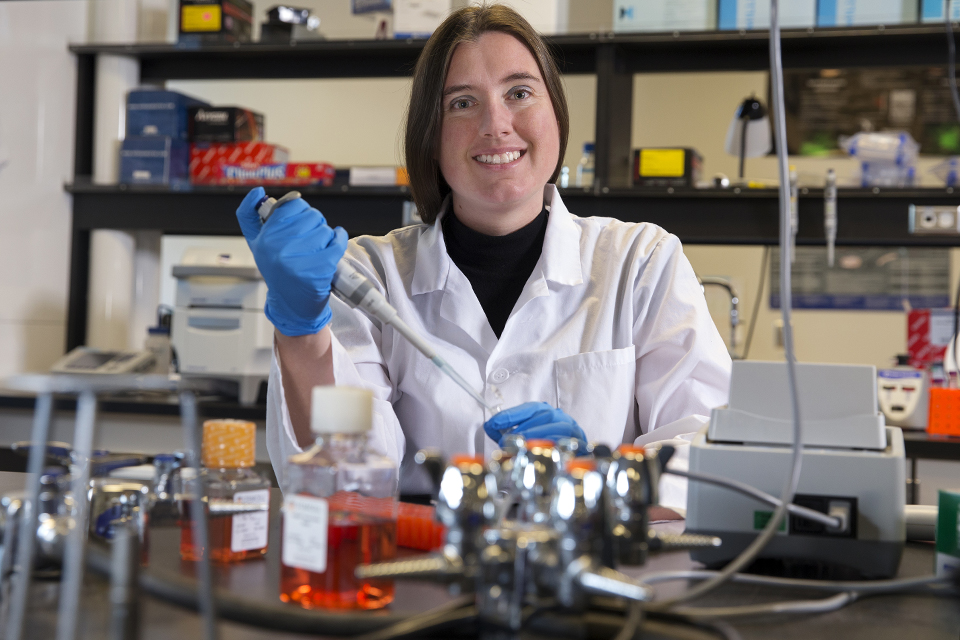 Alzheimer’s studies give many of us hope, whether we have a relative or friend suffering from the dreaded disease—or simply because we are hoping that a cure will be there if we begin to experience symptoms of the most common and crushing form of dementia. As bioprinting becomes valuable in so many different areas of medical research, it is no surprise to hear that now scientists are turning their attention toward using it to find better ways for treating Alzheimer’s.
Alzheimer’s studies give many of us hope, whether we have a relative or friend suffering from the dreaded disease—or simply because we are hoping that a cure will be there if we begin to experience symptoms of the most common and crushing form of dementia. As bioprinting becomes valuable in so many different areas of medical research, it is no surprise to hear that now scientists are turning their attention toward using it to find better ways for treating Alzheimer’s.
3D printing, and the realm within known as bioprinting, allows for scientists to embrace so many benefits, from affordability and expediency, to the ability to keep trying varying iterations until they complete their mission in research or innovation. One of the greatest challenges in dealing with Alzheimer’s has been finding medication that really works. Not only is there pressure to find it for those who have the existing condition, but also for future generations carrying what is thought to be a genetic marker. In ‘Bioprinting neural tissues using stem cells as a tool for screening drug targets for Alzheimer’s disease,’ Stephanie M. Willerth examines the difficulty in both finding, testing, and approving drugs for this trying disease that tends to affect seniors regarding cognition, memory, and language and reasoning.
“The pathology of Alzheimer’s disease includes the presence of plaques containing aggregates of amyloid beta (αβ) proteins and tangles containing neurofibrillary tangles,” states Willerth in her paper. “Certain genetic mutations increase the possibility of developing Alzheimer’s disease.”
“These mutations consist of an altered APP gene responsible for encoding amyloid precursor protein, along with the PSEN1 and PSEN2 mutations cause decreased activity by the γ-secretase complex. These mutations result in improper processing of the αβ proteins. Currently, approved treatments for Alzheimer’s disease include four different types of cholinesterase inhibitors and the drug memantine – a N-methyl-d-aspartate receptor antagonist that targets glutaminergic neurons to preserve their function.”
 Willerth goes on to detail the facts about Memantine, as the only drug approved for Alzheimer’s patients. It has been in use since 2000, and currently there are over 200 other compounds being tested. Memantine is known to be controversial though and Willerth points out that the current drug targets present issues in terms of both successful use in patients, and toxicity, posing a need for improvement before clinical trials commence.
Willerth goes on to detail the facts about Memantine, as the only drug approved for Alzheimer’s patients. It has been in use since 2000, and currently there are over 200 other compounds being tested. Memantine is known to be controversial though and Willerth points out that the current drug targets present issues in terms of both successful use in patients, and toxicity, posing a need for improvement before clinical trials commence.
Better testing before trials would diminish costs in drug development, along with decreasing the amount of time it currently takes to create treatments that are successful.
“Current methods for evaluating target compounds consist of animal models of disease and the use of cadaveric human tissues,” states Willerth. “In addition to their lack of predictive capacity, animal models are costly, and the supplies of human neural tissues remain limited. Developing more effective assays for preclinical identification of drug targets will lower the expense of the drug discovery process and increase the likelihood of successful outcomes at the stage of clinical trials.”
The use of human induced pluripotent stem cells (hiPSCs) is certainly not a novel idea today, having been in use since 2007; however, now, scientists may be able to use such technology regarding Alzheimer’s, reprogramming cells from patients into hiPSCs. While this could offer better tools for studying the disease, and screening drug targets, it could also further studies regarding progression of the disease in patients. Along with that—and this is where bioprinting and 3D printing so often come in—greater patient-specific care should be available too.
“The use of hiPSC lines containing the different genetic mutations associated with Alzheimer’s disease also enables the use of personalized medicine for treating different subsets of the disease. While cells are often cultured on 2D substrates in vitro, these conditions do not accurately mimic the microenvironment present in the CNS,” states Willerth, who goes on to mention research at the University of Wisconsin-Madison where scientists have created stem cells that are able to successfully predict toxicity levels in different compounds.
With alternative methods like 3D bioprinting, tissue engineering is possible but there may still be challenges in controlling viability and ‘behavior’ of cells.
“Recent advances in bioprinting have enabled the printing of hiPSCs using microfluidic extrusion, opening the possibility for applying this technology for high-throughput production of hiPSC-derived neural tissues,” state the researchers. “Recent developments in 3D bioprinting technologies make printing physiologically relevant neural tissues derived from hiPSCs a real possibility.”
Both 3D printing and bioprinting offer untapped potential, along with technology using suspended hydrogels to make complex structures.
“My group has successfully developed microspheres for delivery of two small molecule morphogens – guggulsterone and purmorphamine,” states Willerth. “Our data have shown that such microspheres are powerful tools for promoting the differentiation of hiPSCs into neural tissues and being able to place different combinations and concentrations of microspheres into precise locations using 3D printing would enable production of tissues like that found in the brain and spinal cord. These 3D printed neural tissues could then be used for screening potential drug targets for Alzheimer’s disease as an alternative to expensive preclinical animal testing.”
As work progresses in the future, Willerth’s paper details issues that must be resolved, such as the means for more stable vasculature to bioprint arrays for drug testing.
“Such work could also contribute to development of engineered tissues that could be transplanted for regenerating damaged regions of the central nervous system. Overall, 3D bioprinting hiPSC-derived neural tissues hold significant potential as a novel way to generate new tools for screening drug targets for the treatment of Alzheimer’s disease,” concludes Willerth.
This project is funded by the Canada Research Chairs program, the Natural Science and Engineering Research Council, and the British Columbia Innovation Council’s Ignite Program. SM Willerth also has a commercialization agreement with Aspect Biosystems with regards to 3D printing neural tissues and a provisional patent on a bioink.
What do you think of this news? Let us know your thoughts! Join the discussion of this and other 3D printing topics at 3DPrintBoard.com.
Subscribe to Our Email Newsletter
Stay up-to-date on all the latest news from the 3D printing industry and receive information and offers from third party vendors.
You May Also Like
Further Understanding of 3D Printing Design at ADDITIV Design World
ADDITIV is back once again! This time, the virtual platform for additive manufacturing will be holding the first-ever edition of ADDITIV Design World on May 23rd from 9:00 AM –...
3D Printer Maker EVO-tech Reborn as NEVO3D — Once More With Feeling
EVO-tech was a 3D printing service and original equipment manufacturer established in 2013 and based in Schörfling am Attersee, Austria. The company produced high-quality material extrusion systems featuring linear bearings,...
3D Systems Brings 3D Printed PEEK Cranial Implant to the U.S. with FDA Clearance
For more than 10 years, 3D Systems (NYSE:DDD) has worked hand-in-hand with surgeons to plan over 150,000 patient-specific cases, and develop more than two million instruments and implants from its...
CDFAM Returns to Berlin for Second Annual Symposium
The second CDFAM Computational Design Symposium is scheduled for May 7-8, 2024, in Berlin, and will convene leading experts in computational design across all scales. Building upon the first event...
































